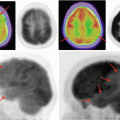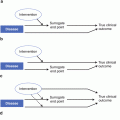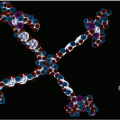Dose (mSv)
Cancer risk
Category I
0.006
GFR measurement (51Cr-EDTA)
1 in 1,000,000 1 in 240,000
0.007
1 day of natural background radiation
0.01
Chest X-ray, DXA
0.025
0.03
AP skull X-ray
0.04
Flight from London to New York (cosmic ray dose)
0.1
Category IIa
0.2
1 month of natural background radiation
1 in 24,000
0.4
AP thoracic spine X-ray
0.7
AP lumbar spine X-ray
Nuclear medicine renogram (MAG3)
1
Nuclear medicine lung scan
Category IIb
2
CT head
1 in 10,000 1 in 2,400
2.7
1 year of UK natural background radiation
3
Nuclear medicine bone scan
Barium meal X-ray
7
Barium enema X-ray
10
CT abdomen
Category III
18
Nuclear medicine myocardial imaging (thallium)
20
Annual dose limit for radiation workers
30
CT follow-up for chemotherapy (multiple CT scans)
Table 3.2
Typical examination doses for each specialty covered within this book
Specialty | Examination | Radiation dose (mSv) | BERT (approximate) | Cancer risk |
|---|---|---|---|---|
Oncology | Head CT | 2 | 8 months | 1 in 12,000 |
Nuclear medicine bone scan | 3 | 1 year | 1 in 8,000 | |
Abdominal CT | 10 | 3 years | 1 in 2,400 | |
F-18 PET/CT | 25 | 8 years | 1 in 1,000 | |
Cardiology | Chest X-ray | 0.01 | 1 day | 1 in 2,400,000 |
Myocardial perfusion scan (stress and rest) | 12 | 4 years | 1 in 2,000 | |
Coronary angiogram | 5–16 | 2–5 years | 1 in 5,000 to 1 in 1,500 | |
Angioplasty | 10–60 | 3–20 years | 1 in 2,400 to 1 in 400 | |
Neurology | Skull AP | 0.02 | 2 days | 1 in 1,200,000 |
Head CT | 2 | 8 months | 1 in 12,000 | |
Nuclear medicine brain SPECT | 5 | 2 years | 1 in 5,000 | |
Musculoskeletal | DEXA (whole body) | <0.001 | <9 h | <1 in 24,000,000 |
Hand or foot | 0.005 | 15 h | 1 in 5,000,000 | |
Lumbar spine | 0.7 | 3 months | 1 in 34,000 | |
Pulmonary disease | Chest X-ray | 0.01 | 1 day | 1 in 2,400,000 |
Nuclear medicine lung scan (ventilation and perfusion) | 1.2 | 5 months | 1 in 20,000 | |
CT chest | 8 | 3 years | 1 in 3,000 | |
CTPA | 12–32 | 4–11 years | 1 in 2,000 to 1 in 750 | |
Body composition | DEXA (whole body) | <0.001 | <9 h | <1 in 24,000,000 |
Ophthalmology | Head CT | 2 | 8 months | 1 in 12,000 |
Nuclear medicine | Bone scan | 3 | 1 year | 1 in 8,000 |
Myocardial perfusion scan (stress and rest) | 12 | 4 years | 1 in 2,000 | |
Brain SPECT | 5 | 2 years | 1 in 5,000 | |
Lung scan (ventilation and perfusion) | 1.2 | 5 months | 1 in 20,000 | |
Renography | 0.7–2 | 3–8 months | 1 in 34,000 to 1 in 12,000 |
The estimate of radiation dose included in the protocol and trial documentation must take into account the potential variation between centres. There are a number of sources of variation to consider:
There are known to be significant differences in the radiation dose from the same investigations from different centres, e.g.:
Equipment variations
Variations in local imaging protocols (e.g. kV, mA settings, slice width, injected activity)
Variations in normal practice, e.g. in the example earlier some centres will combine the staging CT with an initial PET/CT as normal practice as well as including a PET/CT after six courses of chemotherapy
Subject size, recognising that larger patients may receive a greater radiation dose
The population being irradiated (adult, paediatric, older people) in terms of their prognosis and longevity, e.g. children have their whole lives ahead of them so the risk of a radiation-induced cancer appearing is greater than in an adult by about a factor of 3
Where novel imaging techniques are used, the medical physics expert will need to use more fundamental methods for calculating the radiation dose (Appendix 3.1 at the end of this chapter). The radiation dose assessment should document the method used so that the calculation can be understood by an independent expert. With novel techniques it may be necessary to undertake a separate pilot study to assess the radiation dose and optimise the imaging technique.
The radiation dose assessment must document the total radiation dose associated with the trial protocol from research exposures and the additional radiation burden from those exposures over and above normal practice. There will not only be variation between centres on the radiation dose from the same procedures, but there will be variation in what is considered normal practice between centres. For example, for non-small cell lung cancer, it might be normal practice in one centre to have a staging CT scan and then proceed to PET/CT, whereas in another centre subjects may go direct to PET/CT to make full use of the diagnostic CT scan obtained as part of the PET/CT protocol and speed the subject through the pretreatment phase of their care pathway. When designing the trial, the lead radiologist will have to make a judgement as to the extent of the variation in normal practice between the participating centres to enable the medical physicist to properly convey the additional risk and its potential variation.
The radiation dose assessment should also quantify the risks and give a clear statement of the risk coefficients and assumptions used so that an independent expert can follow the calculation. Any adjustments made to the risks calculated because of the population being studied must be documented, e.g. for a paediatric population.
It is helpful if the medical physicist also expresses the radiation dose in terms of a diagnostic reference level (DRL) that can easily be measured in real life. The DRL is a level of radiation dose that would not normally be exceeded for a particular examination for the average patient [16, 17]. It might be expressed in terms of dose area product (DAP) for X-ray, screening time for fluoroscopy, CT Dose Index (CTDI) for CT or administered activity in nuclear medicine. This allows participating centres to audit the actual radiation dose given to trial subjects – an increasing requirement from regulatory authorities.
What Are the Risks?
The main effect from additional radiation is an increase in the lifetime risk of cancer occurring, potentially, many years after the exposure. This risk is given in the right-hand column of Table 3.1 calculated using the latest published risk estimates; see Appendix 3.1 at the end of this chapter. This may be compared with the lifetime cancer risk of 1 in 3. Table 3.1 also shows the radiation dose from typical X-ray and nuclear medicine tests and radiation doses from natural sources. For example, the annual background dose in the UK is about 2.7 mSv, coming from cosmic rays (14 %), food (12 %) and the ground (16 %) as well as from radon gas (58 %). Radon gas seeps out of the ground and accumulates in our houses. In some parts of the UK, there is much more radon gas coming from radioactive materials in the rock, and the annual natural background dose is up to three times higher than the average.
The risks from different examinations in Table 3.1 are split into categories suggested by international guidelines [3, 18]. Each category has a tenfold increase in risk as you move from Category I to Category III. The guidelines also describe the level of benefit required to justify the use of imaging in a research trial in each category. When the risk is trivial, for example, it is acceptable to use an X-ray in research just to find out something new. In Category III, where there is a moderate risk and repeated exposures may lead to an unacceptable risk, the use of an X-ray examination should lead to significant benefit to society before it can be justified. A CT scan, for example, just to show the size of a tumour as an outcome measure in the trial of a new chemotherapy drug may not be justified simply on the basis that it is a requirement of the trial sponsor. If it is an assessment of patient response that will change patient management, it probably is justified.
The risks are additive. So two CT scans as part of the study double the radiation dose and thus double the risks.
Other risks have to be considered. For example, a trial of a new X-ray-guided cardiology procedure may give a high dose, but this may be offset against the alternate risk of major heart surgery and a general anaesthetic.
The lead radiologist will need to consider a number of issues within the radiation risk assessment. These will include:
The reason for the radiation exposure. Is it required for patient management or is it solely to provide data for the research trial with no direct benefit to the subject? Do they meet the objectives of the study and are they ethically acceptable?
Do the radiation exposures in the protocol form part of normal clinical management, taking into account variation at different participating centres?
Is the radiation dose from the investigations ALARA consistent with obtaining images of sufficient quality to meet the study objectives. Procedures need to be optimised so that image quality is balanced with radiation dose. Give too much radiation and there is little gain in image quality, and the subject receives unnecessary radiation dose. Give too little and the images are not of sufficient quality to be diagnostic – again unnecessary dose for the subject as it was not worth carrying out the test.
The potential diagnostic benefits, including direct benefits to the participant and the benefits to society from the knowledge generated from the research trial. This is one argument for ensuring the quality of clinical trials and doing good research. In reality, for any particular research problem, there are a few key papers that document well-designed and well-carried-out trials that are the definitive studies. They are well documented and can be used in meta-analyses. On the other hand there are many that sink without trace in the ever growing morass of research publications, where the societal benefit is minimal.
Stay updated, free articles. Join our Telegram channel

Full access? Get Clinical Tree








